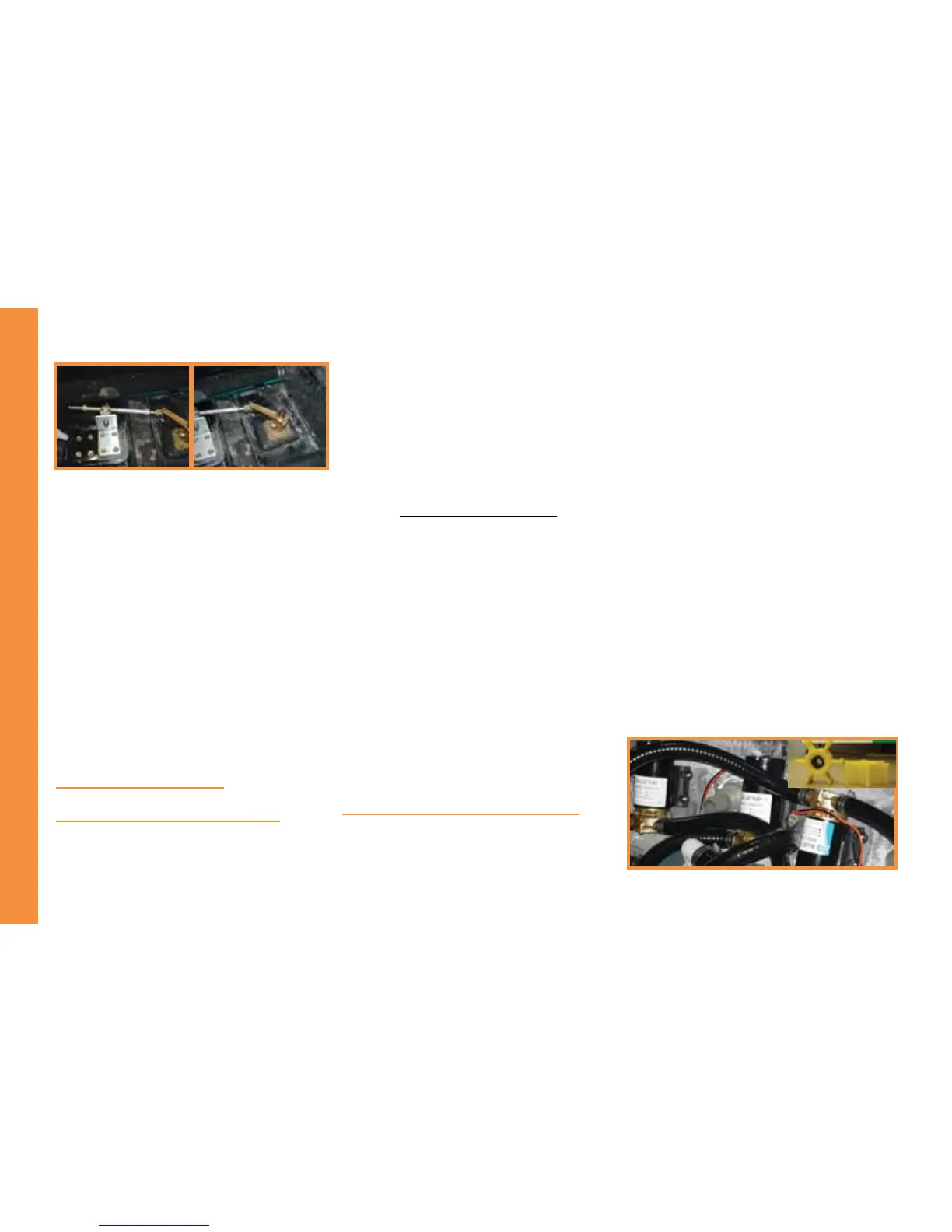Page 6-24 2014 MasterCraft Owners Manual • Care and Maintenance
C A R E A N D M A I N T E N A N C E
Work the steering wheel back and
forthandre-applygreaseifneces-
sary.
Step 6: Usingtheexibleendofagrease
gun, give two (2) full shots of
white lithium grease to the two (2)
greasettings:oneontherudder
shaft, and one on the pivot. Clean
upanyoldgreasepurgedfromthe
areas.
Step 7: Rotate the steering wheel back
and forth several times to work
the lubricant in.
Step 8: Re-installtheaccesspanel.
Lubricate the Shift and
Throttle System
Because this process should be completed
while all movable components of the drive
train are NOT in motion, MasterCraft rec-
ommends this be done while the boat is out
of the water.
Step 1: Ensure the engine is OFF and dis-
connecttheenginesafetystarting
switch. Be sure that the throttle/
shift control lever is in neutral.
The engine must be cool.
Step 2: Open the engine box and locate
the shift and throttle cable ends.
Step 3: Shift to full-throttle-forward.
Step 4: Lubricatethecableendsandcon-
nections with a coating of wa-
terproof marine multi-purpose
grease.
Step 5: Lubricatethepivotsandlinkages
with a light grease.
Step 6: Shift the control lever from full-
throttle-forward to full-throttle-
reverse several times to work the
lubricant in.
Check the Ballast Pump Impeller
This applies only to boats equipped with
some type of ballast system. The number of
ballast pumps varies from system to system.
Authorized MasterCraft dealers can pro-
vide guidance to locate any and all pumps.
Step 1: Remove two (2) of the cover
screws and loosen the third screw.
Retainthescrewsforthereinstal-
lation process. Swing the cover
outofthewaytoallowaccessto
the impeller location.
Step 2: Using needle-nose pliers, pull the
old impeller out of the casing.
Step 3: Install a new impeller. (It is in-
tentionally larger than the case.
Whilegently squeezing itin, en-
sure that the paddle wheels angle
in the same direction—counter-
clockwise—allthewayaround.)
Step 4: Slide the plate back into place.
No silicone is necessary. Due to
the built-in gasket, tightening the
screws should prevent leakage.

